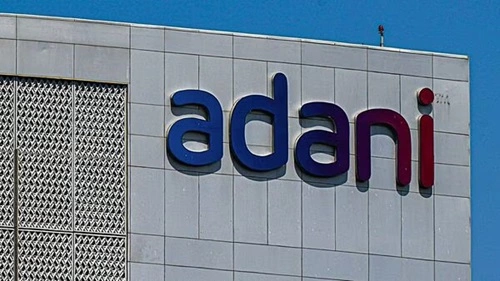Today, our lives are heavily dependent on technology. We are always connected through mobile phones and the internet. This has also helped businesses in a great way. Businesses have gone online, and even banks have gone online. Technology has led to an evolution of traditional businesses, and a new stream has evolved, which is called e-business. Today, e-businesses are managed differently when we compare them with traditional businesses. There is much different software that is used for managing e-business. Talking about traditional business, there is no or minimal use of technology.

Today, we have dedicated this space to talking about e-business and traditional business. We will talk about the basics of e-business & traditional business and discuss the activities under the two streams. So, without waiting any further, jump on to the next section and look at the differences between e-business and traditional business.
What is E-Business?
Before we begin talking about e-business, we would like to clarify that you must not confuse e-business with e-commerce. These are two different streams. Under the e-business, all the activities are performed with the help of the internet. All the work streams and workflows are connected. In addition, when we talk about e-business, it means that the procurement of goods and supply chain management is also based on the internet. Businesses leverage different applications and software to manage these tasks. The common options used are ERPs which are package software for all business needs. Under the e-business, customer support, invoicing, accounting, sales, and human resource management are online.
The scope of e-business is large, and most of the time, you will notice that e-businesses are online 24×7. An example of an e-business can be a chain of stores like Walmart. Here all the activities are managed online, including procurement. Sales are online as well as offline. Similarly, you will find many options for e-businesses when you look around yourself.
Also read: Difference Between E-Commerce and E-Business
Activities Under E-Business
By now, you would have an understanding of e-business. Let us now look at the activities undertaken under e-business.
- Procurement of Products
- Sales of Products and Services
- Customer Support and Customer Relationship Management
- Managing Supply Chain End-To-End
- Accounting and Management of Business Transaction
- Setting up Online Store and Online Sales
- Marketing and Advertising of Brand Online
What is Traditional Business?
Traditional business is the simplest form of business that you will see. This is more like a local shop that you see in the market. Traditional businesses may offer products or services. In the case of traditional businesses, you need to visit directly to the store to get the products. Forming traditional businesses also requires a significant amount of capital and space. The physical presence should be notified so customers can access the business. In addition, there needs to be enough marketing and the operation cost in a traditional business is also on the higher side. Location constraint restricts traditional businesses, and they may not even offer products across the city. The advantage of traditional businesses is that you get your products and services immediately. In most cases, people still have a higher level of trust in traditional businesses since they can physically see the product.
The profit margins are slowly declining under traditional businesses, but the presence of traditional businesses is also mandatory. Some traditional businesses can leverage technology. For example, physical stores can now leverage the benefits of the inventory management system. There are some examples where traditional businesses have changed their business model and are now e-businesses.
Activities Under Traditional Business
Let us now look at the activities under traditional businesses.
- Procurement of Products & Services
- Sales of Products & Services
- Advertising and Marketing
- Account, Invoicing and Inventory Management
- Managing Operations and Other Day to Day Activities
- Managing Employees
Difference Between Traditional Business & E-Business in Tabular Form
Below is a table that summarizes all the differences between traditional and e-business. Check it out now.
| Traditional Business | E-Business |
| Most activities are managed offline in traditional businesses, with some managed online. | All activities are managed online in e-business. |
| Traditional businesses usually don’t have anything to do with e-commerce. | E-business is closely related to e-commerce. |
| The financial transactions can be online or offline. It depends on the nature of the business. | All types of business transactions are online in e-business. |
| Traditional businesses have limited availability and may be restricted to market times. | The e-business has high accessibility, and it is usually available 24×7. |
| The procurement, accounting and employee management are offline, and the scope is limited. | The scope of e-business is wide, and it may include procurement, accounting and employee & customer management. |
| There is usually no software used in traditional businesses. Some may use independent software for invoicing and accounting. | E-business use software like CRMs, ERPs and other types of apps. |
| The business relationship is usually linear, and the internet is not required in most cases. | E-business needs an intranet and internet for every process. The business relationship is interlinked. |
| Marketing is usually one way through mediums like advertisements and boards. | Marketing is holistic, and there is a huge dependency on social media. |
| In traditional businesses, the products and services are delivered instantly. | The delivery of goods and services may not be instant. |
Final Verdict
These are the main differences between e-business and traditional business. You would have seen that traditional businesses are usually time-honoured and classic setups. They are very reliable and have been the usual mode of business until now. With the onset of technology, traditional businesses have been either transiting towards the e-business model or some are staying as-is. It all depends on the nature of the business.
Both traditional businesses and e-business have their advantages as well as disadvantages. They both are necessary for an economy, and hence you can’t undermine the importance of any. It can be said that traditional businesses and e-businesses coexist. There may overlap in some cases, but we don’t see traditional businesses going anywhere in the upcoming years. You will always find people who prefer traditional businesses, and then you will find the ones who prefer e-business.














